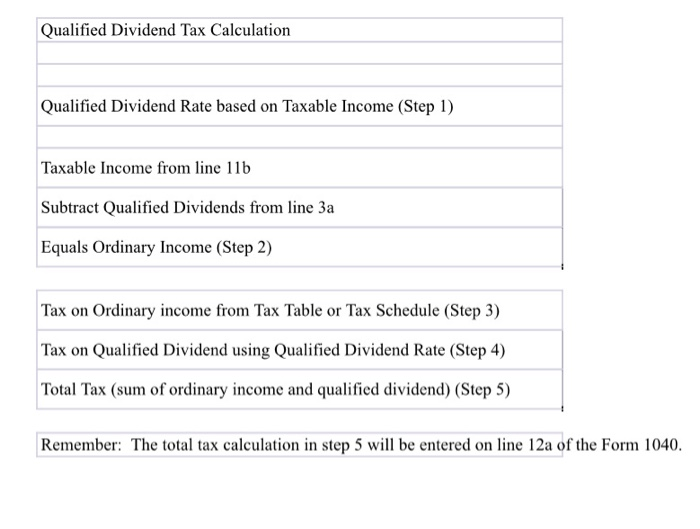Question
Companies pay their shareholders dividends. The dividends can be ordinary dividends (box 1a of the Form 1099-DIV) or they can be ordinary dividends AND qualified
Companies pay their shareholders dividends. The dividends can be "ordinary dividends" (box 1a of the Form 1099-DIV) or they can be "ordinary dividends" AND "qualified dividends" (box 1b of the Form 1099-DIV). If they are "ordinary" they are taxed at the taxpayer's regular tax rate from the tax rate schedules.
To be a "qualified dividend", they (1) made from the earnings and profits of the corporation and (2) are from domestic corporations or qualified foreign corporations.
If they are "qualified dividend" they are taxed at lower rates. These rates are 0% for lower income tax payers to 20% for high income taxpayers. See the qualified dividend tax instructions for the exact breakdown of rates based on income.
If there are qualified dividends, you need to do two separate tax calculations. One for all the income except the dividend and one calculation for the dividend. Then, you will add them together. This total is reported as the tax on the Form 1040.
There is no tax benefit for qualified dividends for Wisconsin tax purposes.
2019 tax year
1. A single individual has taxable income of $120,000. Included in that amount, is a qualified dividend of $2,000. What is his tax liability?
2. A single individual has taxable income of $25,000. Included in that amount is a qualified dividend of $1,000. What is his tax liability?
3. A married couple filing jointly has taxable income of $200,000. Included in their income is a qualified dividend of $3,000. What is their tax liability?
.
Qualified Dividend Tax Calculation Qualified Dividend Rate based on Taxable Income (Step 1) Taxable Income from line 11b Subtract Qualified Dividends from line 3a Equals Ordinary Income (Step 2) Tax on Ordinary income from Tax Table or Tax Schedule (Step 3) Tax on Qualified Dividend using Qualified Dividend Rate (Step 4) Total Tax (sum of ordinary income and qualified dividend) (Step 5) Remember: The total tax calculation in step 5 will be entered on line 12a of the Form 1040.
Step by Step Solution
3.41 Rating (164 Votes )
There are 3 Steps involved in it
Step: 1
1 For the single individual with taxable income of 120000 and a qualified dividend of 2000 the tax l...
Get Instant Access to Expert-Tailored Solutions
See step-by-step solutions with expert insights and AI powered tools for academic success
Step: 2

Step: 3

Ace Your Homework with AI
Get the answers you need in no time with our AI-driven, step-by-step assistance
Get Started


